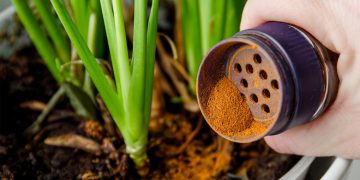When it comes to propagating plants, gardeners often look for ways to increase the success rate of rooting cuttings. Rooting hormones, whether synthetic or natural, play a crucial role in stimulating the development of roots on plant cuttings. One natural substance that has long been considered a potential rooting hormone is willow. But does willow actually work as a rooting hormone, and how can gardeners make use of it? Let’s explore the science behind it.
Understanding Rooting Hormones
Rooting hormones are compounds that encourage plant tissues to form roots. These hormones work by stimulating cell division and the formation of root initials, which eventually develop into a root system. In the plant world, the most common rooting hormone is auxin, a type of plant growth hormone that regulates various aspects of plant growth, including root formation.
Commercial rooting hormones typically contain synthetic forms of auxins, like indole-3-butyric acid (IBA), which can be effective at promoting root development in cuttings. However, many gardeners prefer to use natural alternatives, especially when they’re looking for an organic solution or trying to avoid chemicals.
Willow: A Natural Source of Auxins

Willow trees (genus Salix) are known for their ability to root quickly and easily. This characteristic has made them the subject of interest for gardeners seeking natural rooting aids. The key to willow’s effectiveness as a rooting hormone lies in its high levels of naturally occurring auxins, particularly indole-3-acetic acid (IAA), which is the most common form of auxin found in plants.
Willow bark and shoots contain these plant hormones, which can stimulate root development in other plants when used appropriately. The presence of auxins in willow is why many gardeners have historically used willow-based solutions to boost rooting success in cuttings.
How to Use Willow as a Rooting Hormone
There are a few ways to use willow as a rooting hormone. One of the most common methods is to make a willow water solution. Here’s a simple guide to preparing willow rooting hormone:

- Collect Willow Shoots: Harvest young, flexible shoots or branches from a willow tree. The younger the material, the higher the concentration of auxins.
- Cut and Soak: Cut the willow branches into small pieces (about 6-8 inches in length). Soak the pieces in water for 24 to 48 hours. This allows the auxins to leach into the water.
- Strain the Solution: After soaking, strain the solution to remove the plant material, leaving just the liquid.
- Use the Willow Water: Dip the cut ends of your plant cuttings into the willow water or soak the cuttings in the solution for a few hours before planting them in soil.
You can also make a willow-based paste or gel by reducing the willow water further and adding it to a thickening agent, like cornstarch. This creates a more concentrated application for cuttings.
The Effectiveness of Willow as a Rooting Hormone
While willow water does contain auxins, it’s important to note that its effectiveness as a rooting hormone may not be as strong as synthetic rooting hormones. Studies have shown that willow water can promote root growth in some plant species, though it may not be as reliable or consistent as commercial products that are specifically formulated for optimal rooting.
That said, willow water is a safe, natural alternative to synthetic chemicals, and it has been used successfully by many gardeners. It’s particularly useful for gardeners who prefer organic practices or those who are propagating plants that are less demanding in terms of rooting conditions. Read more: Can I use Honey Instead of Rooting Hormones?
Other Benefits of Willow
Aside from its role in promoting root growth, willow also has some other benefits for plant propagation. For example:
- Fungal Resistance: Willow bark contains compounds that can help deter certain fungal infections, providing an additional layer of protection for your cuttings.
- Low Cost: Willow is a common and widely available plant, making it an inexpensive option for gardeners.
- Environmental Sustainability: Using willow as a rooting hormone is an eco-friendly choice since it relies on natural, renewable materials.
Conclusion
In conclusion, willow can indeed work as a natural rooting hormone due to its high auxin content. While it may not be as potent as synthetic hormones, it’s a useful alternative for gardeners seeking a natural way to encourage root development in plant cuttings. Willow water is easy to make, cost-effective, and an environmentally friendly option for those looking to propagate plants organically. Whether or not it works for a specific plant may depend on the species and the conditions under which the cuttings are taken, but for many gardeners, willow remains a valuable tool in their plant propagation toolkit.
















